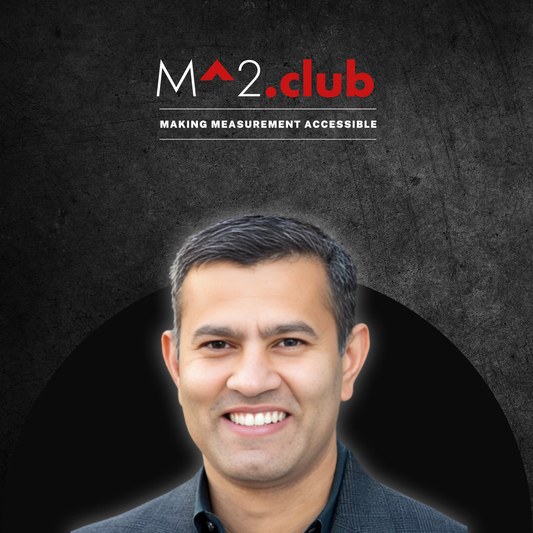Reigniting Stalled Growth with Advanced Attribution: A Case Study of LaserAway
It’s every marketer’s dream to crack the attribution code. Smart marketers are using advanced attribution to
understand how to point their marketing dollars accurately at demand.
About LaserAway
LaserAway is a leading aesthetic dermatology brand, offering a wide range of services including laser hair removal,
tattoo removal, and Botox treatments, with approximately 130 locations across 25 states. They have executed on
growth using a centralized performance marketing strategy primarily investing on search and Facebook ads.
The Challenge: Saturation and Stagnation
LaserAway had a classic performance marketing execution. . They have driven growth on non-branded search and
Facebook broad audience ads.more than 80% of the budget was focused on those two channels. Their data-forward
approach meant they had invested heavily in backend infrastructure, UTM attribution, and even built their own
Customer Data Platform (CDP) in-house.
However, despite their lower funnel success, the CMO Paul faced a roadblock. They had saturated their non-brand
search and facebook prospecting channels, the channels were being managed to a ROAS of 3, and both channels had
gotten to 3, and there was little ROAS head room left. Attempts to diversify into mid-funnel channels like streaming
TV, Pandora, and OTT were yielding ROAS positive results as measured by UTM attribution. The CMO knew these channels
had potential—after all, who hasn’t been enticed by an ad during a binge-watching session or a podcast break? Yet,
their existing attribution models weren’t picking up the impact.
Enter Advanced Attribution
LaserAway engaged M^2 to employ advanced attribution studies to understand the efficacy of their mid-funnel
channels better. It was clear that the last-click and UTM attribution models were not capturing the full picture.
LaserAway needed a more comprehensive approach.

The Process: From Data Blending to Insights
We began conducting a triangulation analysis by pooling together internal UTM data, platform attribution data, and
transaction data. This process was painstaking, but essential for unlocking deeper insights.
The first revelation was stark: While search and Facebook were managing to hit their ROAS targets, mid-funnel
channels showed dismal performance on UTM metrics. However, our next step, Media Mix Modeling (MMM), began to
paint a different picture.

The Big Reveal: MMM Findings
The MMM analysis was a game-changer. It confirmed that search and Facebook were indeed strong contributors. But
the big surprise was CTV. Despite modest initial investment, CTV showed nearly as strong a contribution as search
and facebook. This was a significant finding. Other mid-funnel channels like TikTok, Snap, and Pandora, however,
still struggled to show strong contributions.

Opportunity Analysis
Armed with these insights, we moved into opportunity analysis. We modeled scenarios like cutting 30% of the search
budget to reallocate to upper funnel opportunities like CTV and Facebook. This step was crucial. It wasn’t just
about reallocating budgets; it was about making these reallocations testable. Testing the Hypotheses
We devised a series of tests:
-
A split test on AdWords to understand the impact of reduced search spend. Will the ROAs improve if we reduce
budgets.
- A Facebook lift study, to understand true incremental ROAS on facebook
- Geo-matched market tests for CTV channels and Pandora audio streaming, to understand its true ROAS
- A lift test on Snap, to understand its true incremental ROAS
Each of these tests was designed to measure the real-world impact of our proposed budget reallocations. This
approach was practical and flexible, allowing us to mix and match tests based on the decisions at hand.
Results and Reflections
The results were telling. A top line growth of 12%. The CTV channels, which initially seemed to offer no signal on
performance, emerged as one of the strongest contributors in our models. This affirmed the potential of mid-funnel
investments when backed by robust attribution models.
LaserAway’s journey underscores a vital lesson for marketers: Advanced attribution is not a one-size-fits-all
solution but a journey. Each step, each model, and each test reveals something new about the business, the
customers, and the media channels.
Conclusion: The Path Forward
LaserAway’s case is a testament to the power of advanced attribution in uncovering hidden growth opportunities. For
marketers, the takeaway is clear: don’t shy away from the complexity of advanced attribution. Embrace it as a tool
to refine your strategies, optimize your budgets, and ultimately, scale your growth.
The journey is unique for every brand, but with the right insights and a willingness to test and learn, the path to
success becomes much clearer. LaserAway’s story is just one example of how data, when used effectively, can unlock
new levels of growth and performance in the ever-evolving landscape of marketing.














